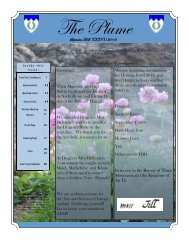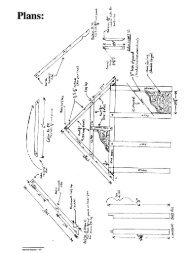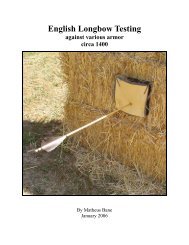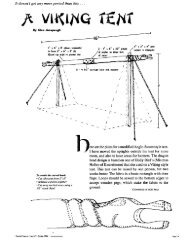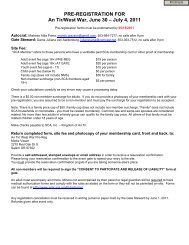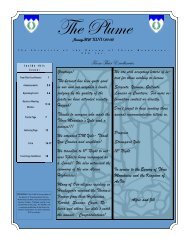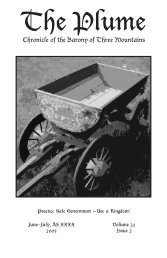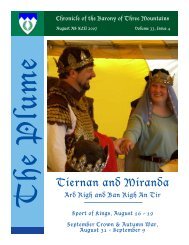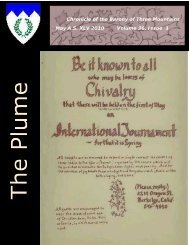The Kiev Psalter of 1397: An Analysis - CurrentMiddleAges.org
The Kiev Psalter of 1397: An Analysis - CurrentMiddleAges.org
The Kiev Psalter of 1397: An Analysis - CurrentMiddleAges.org
You also want an ePaper? Increase the reach of your titles
YUMPU automatically turns print PDFs into web optimized ePapers that Google loves.
the bottom margin <strong>of</strong> folio 28 recto, is <strong>of</strong> three men with a pile <strong>of</strong> clothing. <strong>The</strong> line<br />
between the men and the text appears to link them to line 18 (“<strong>The</strong>y part my garments<br />
among them, and cast lots upon my vesture”). Because <strong>of</strong> the nature <strong>of</strong> the psalms, the<br />
words supply no direct link between themselves and the arrest and execution <strong>of</strong> Christ.<br />
However, religious commentators interpreted the psalms as prophecies <strong>of</strong> the New<br />
Testament, and the illustrations <strong>of</strong> marginal psalters are used in this manner to link the<br />
prophecies with the events to which they refer. <strong>The</strong> same image <strong>of</strong> the dog-soldiers<br />
appears in the Khludov <strong>Psalter</strong> on folio 19 verso, while the other two are located on the<br />
facing page.<br />
<strong>The</strong> illustrations <strong>of</strong> the <strong>Kiev</strong><br />
<strong>Psalter</strong> vary in size, sometimes filling<br />
the margins completely, but more <strong>of</strong>ten<br />
occupying only portions <strong>of</strong> the available<br />
space. Among the full marginal images<br />
is the illustration called the “Fable <strong>of</strong><br />
the Unicorn,” referring to an apocryphal<br />
story called the “Fable <strong>of</strong> the Sweetness<br />
<strong>of</strong> this World”. 34 <strong>The</strong> story comes from<br />
an early Christian religious romance,<br />
the Greek version <strong>of</strong> which has been<br />
attributed to St John <strong>of</strong> Damascus (675-<br />
749). Ioasaph, the son <strong>of</strong> a pagan king,<br />
had chosen to convert to Christianity<br />
after meeting and talking with St<br />
Barlaam. 35 In order to teach Ioasaph<br />
about his new faith, Barlaam told him a<br />
series <strong>of</strong> parables, including the one portrayed in the <strong>Kiev</strong> <strong>Psalter</strong>. <strong>The</strong> story is complex,<br />
but its conclusion is laid out completely for the reader <strong>of</strong> the <strong>Psalter</strong> in a tiny, vermilion<br />
legend filling the top margin. <strong>The</strong>re is no line connecting the image to a specific part <strong>of</strong><br />
33 ibid.<br />
34 Popova, Russian Illuminated Manuscripts, plate 29.<br />
9



